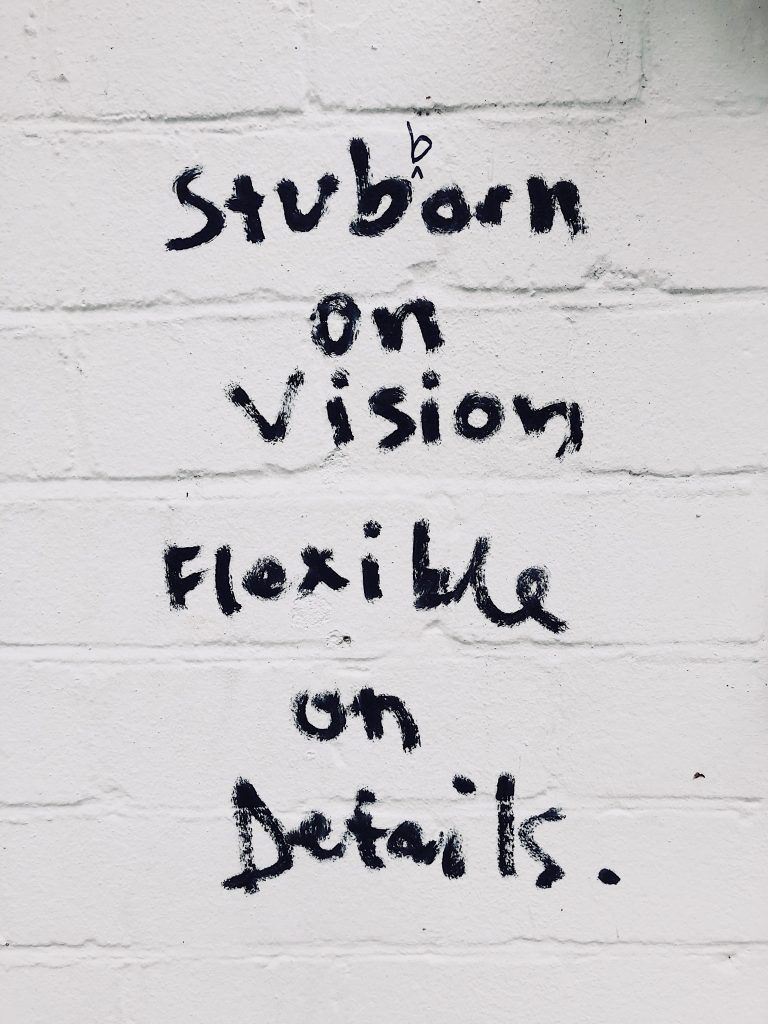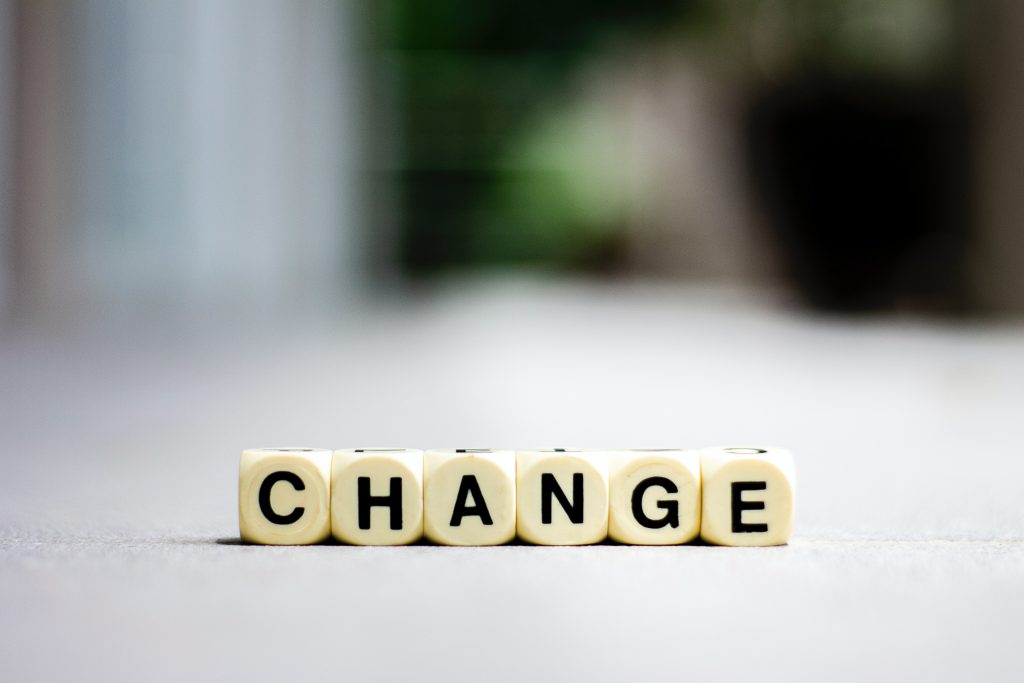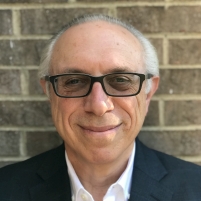Strategic Agenda Setting as Prosocial ROE’M-ing
(for parts 1 and 2 of this series click here and here respectively)
There is an accumulating body of research indicating that our longitudinal wellbeing as individuals can be predicted based in our ability to conversationally express a sense of perspective about ourselves and our values (Atkins & Styles 2016; Styles & Atkins 2018). As we now can derive from our discussion of Relational Frame Theory and the analysis of language RFT affords us, such behaviours as perspective-taking and valuing speak to the way we ROE-M through our lives.
Broadening our view, we now can see that, as much as individual wellbeing can be predicted based on how perspective-taking and valuing are conveyed conversationally, Strategic Agenda Setting invites organizations to engage in dialogue towards exploring and then consolidating multiple perspectives regarding shared purpose and future ambitions. In other words, in the context of their Motivational histories, groups (teams, departments, entire organizations) Relate their stories, Orient to their environmental contingencies of influence, and seek to Evoke their future course as made manifest conversationally in the present.

Before exploring Strategic Agenda Setting further in relation to Prosocial, let’s also consider the significance of ROE-M’ing in relation to how we described the essential feature of Evolution Science in Part 1 of this series as the process of variation, selection and retention in specified contexts. What is the significance of ROE-M’ing for Evolution Science? ROE-M’ing-based analyses are crucial if variation, selection, and retention are to occur! Consider this: we humans tell stories, and left to our own devices, we can become so embroiled in our evoked emotional reactions to our narratives that we fail to notice potentially relevant environmental variables or to create (derive) alternative storylines. ROE-M’ing thus points us towards the critical contingencies that we must orient to and relate to differently for evolutionary selection pressures (in this case, our individual values and our shared purposes!) to act upon, and for us to then test for viability as our preferred futures meet the test of predicted probabilities encountering actual circumstances. RFT thus provides us not only with a theory of language and cognition, but also with a behavioural theory of evolutionary change.
Strategic Agenda Setting at PLEA
Although we will be focusing this discussion on the procedure of Strategic Agenda Setting, it is important to recognize that this is just one way of implementing the broader approach of Prosocial. For example, the procedure could follow an initial introduction to Prosocial via a consultant conducting two iterations of the ACT Matrix, one focused on individuals and then another focused on the group. Varying degrees of training also could be conducted to introduce the group to the Core Design Principles before initiating Strategic Agenda Setting.
Of course, the CDP’s are themselves formulated in words, so we know we are in the domain of language (RFT!) before we even begin to apply the CDP’s in organizational settings. We asked in Part 1 how multiple players in a system might: 1) Constitute themselves into mutually beneficial relationships?; 2) Organise themselves strategically?; 3) Design and implement the machinery of the system to get things done? and 4) Motivate themselves? Notice the way in which Strategic Agenda Setting anchors groups in CDP 1, that is, in the common ground of clarifying shared purposes rather than divisive areas of difference and problem identification. This procedure further addresses these questions via the other CDP’s in attending to issues of responsibility and decision-making, monitoring and anticipating future concerns, supporting individual and collective autonomy, and incorporating systemic contingencies into the process of strategic planning.

Strategic Agenda Setting thus is a procedure intended for organizations to derive strategically positioned opportunities to further their professional interests within their spheres of influence. In our first of three dialogues at PLEA, the leadership team oriented to the way in which the use of the term “values” in our surrounding regulatory and funding systems emphasized cost-containment, in contrast with our preferred transformation of the term to mean operating based in Prosocial’s Core Design Principles. This conversation led us to formulate a strategic question: “What would it look like in ten years if there was a truly values-based governance system in place at PLEA?”
Based in the aforementioned view of power as mobilizing resources to address individual and collective needs, and with the intention of embarking organizationally on an exploration of this strategic question, our fieldwork became a matter of surveying our internal stakeholders, that is, our administrative team, our staff, and our board of directors, regarding their desired view of PLEA ten years down the road. We then proceeded during the course of the next two dialogues to collate their responses, to share their feedback with them to ensure that they were being heard, to organize this next level of responding into thematic areas, and to begin drafting a “roadmap” for managing organizational evolutionary change.
As we write this report, we are continuing beyond this initial sequence of dialogues to formulate specific actions to be taken while remaining cognizant of the critical environmental contingencies we have identified that might impact our journey towards our “preferred and probable future.” Longitudinally, we will be tracking, for example, changes in legalities pertaining to programs such as ours at local, state, and federal levels; regulatory and administrative changes involving the school districts that serve as our referral sources; and broader societal trends involving health care (such as viral pandemics!) and attitudes towards youngsters with Autistic Spectrum Disorders and other developmental challenges. More immediately, we plan to continue surveying such external organizational stakeholders as the families of the children we serve, as well as our referral, regulatory and funding sources regarding our intention to utilize the CDP’s to address such issues as increasing our efforts to improve and expand the clinical care we provide, retaining and rewarding our highly dedicated staff, and expanding our board of directors while enhancing its ability to utilize Prosocial in its governance functions.
ROE-M’ing our way to a preferred and probable future

So, where to from here? Practically speaking, applying what we have discussed involves reconstituting ourselves in the world at every level. The method we are employing involves developing our capacity for perspective-taking and the application of a set of operant behavioural streams, referred to as Core Design Principles (CDP), that have been shown to align many decision-making centres under an overarching set of prosocial norms, policies and procedures (Atkins et al. 2019; Ostrom 1990). This polycentric vision leverages the forms of self-governance and organisation that naturally result from stakeholder interactions as they constitute themselves into mutually respectful and workable relationships (Lohmann 2016). Such polycentrically-governed and normative contexts have been shown to persist through time and prevail through chaotic circumstances (Aligica 2016; Araral & Hartley 2013).
Moreover, such polycentric strategy and governance work, being dialogical, means cultivating effective perspective-taking and communication at every level – between individuals and across the system. Developing systems for making decisions about how we can conduct our business of living together, systems that promote human and planetary prosperity. In a nutshell, we believe the essentials include:
Psychological Flexibility: We each need to treat all life with reverence, including our own, which means finding ways of mindfully supporting each other, holding ourselves accountable, recognising our strengths and limits, and continue working flexibly and effectively towards our individual and collective valued goals.
And the Core Design Principles:
- Shared identity and purpose: We need to identify ourselves within bounded groups that share a sacred duty and responsibility to work together to preserve life, the life of each individual, as well as the collective and our planet.
- Equitable distribution of contributions and benefits: We need to mobilise available resources to meet needs in a way that ensures the derived benefits for those involved are matched as fairly and equitably as possible.
- Fair and inclusive decision-making: We need to implement decision-making processes that include all those impacted by the outcomes to ensure fair, collaborative, and inclusive deliberations occur at all levels.
- Monitoring agreed-upon behaviours: We need to institute feedback loops, both material and relational, that allow us to monitor and learn, individually and collectively, the effects that our actions and choices have upon others and systemically.
- Graduated responses to helpful and unhelpful behaviour: We need mechanisms that allow us to continually grow in our ability to live our values and be effective in the pursuit of our goals.
- Fast and fair conflict resolution: We need approaches based on restorative justice principles that can handle conflict at all levels in diverse systems and circumstances and only retain punitive responses for the most flagrant of violations.
- Authority to self-govern: We need sufficient local autonomy from other groups to enable choice and internal decisions about how we work together in the service of our shared purpose.
- Collaborative arrangements with other groups: We need to show that the methods we employ to use resources interdependently and sustainably can also be scaled up to larger polycentrically governed systems.

So, what might all this mean?
Implementing these principles (operants) can be understood functionally as the behaviour of deriving relations between contextual events and desired change, and then acting affirmatively with regard to those derived relations. We believe that as we consciously engage with such practices within active communities of commitment, the resulting response goes way beyond individual transformation to restoring a community’s capacity to develop collective and collaborative ways to sustain itself now and into the future. In other words, this is consciously evolving of a world that works for all.
Author Bios:

Dr Robert Styles initially trained in music then, in a later chapter of his life, went on to become an academic doing applied research in the field of Contextual Behavioural Science through the Australian National University. Over the last couple of decades, this stream of activity has had Robert working with communities, organisations, and governments across the Australian, Pacific, African, Asian, European, and American regions. Presently, he is working with Prosocial World, an organisation that has developed a change method based on behavioural and evolutionary science that enhances cooperation and collaboration for groups of all types and sizes that is potentially effective at a global scale. When engaged, for Robert, this means co-designing behavioural and evolutionary approaches to realising environmental and socio-cultural resilience and wellbeing for those he is working with.

Stuart Libman, M.D. is a Board Certified Child, Adolescent and Family Psychiatrist, with further sub-specialization in Sports Psychiatry. After graduating from Ohio University and the School of Medicine at Case Western Reserve University, he completed training in Pediatrics, General Psychiatry, and Child and Adolescent Psychiatry at the University of Pittsburgh. Dr. Libman serves as a Peer Reviewed ACT Trainer for the Association of Contextual Behavioral Science, as a Prosocial Facilitator, and as the Medical Director of the PLEA School Based Partial Hospital Program that provides behavior analytically based education and treatment to a referred population of children and youth with diagnoses on the Autistic Spectrum.

Gretchen Kelly is the Executive Director of PLEA, an agency that provides services to children, adults and families dealing with developmental and/or behavioral health difficulties. This role provides Gretchen with opportunities to focus on community partnerships and to help individuals and their families feel empowered through meaningful relationships. After training in both ACT and Prosocial, she has integrated these concepts into her work at PLEA and with other community associations as a board member or in an advisory capacity. Gretchen has a degree in Public Relations from Westminster College.

Aaron Libman is the Clinical and Program Director for the PLEA School Based Partial Hospital Program. In his role he oversees the education and behavioral health treatment of 40 students, ages 3-21 years, in a specialized program that places an emphasis on behavior analytic interventions to promote adaptive functioning, language and communication development, and academic progress. He has received formal training in Acceptance and Commitment Therapy (ACT), Relational Frame Theory (RFT), and Prosocial, which all inform the day-to-day treatment conversations at PLEA as well as broader organizational planning. Aaron received his Bachelor’s Degree in Psychology from Denison University and his Master’s Degree in Education from the University of Pittsburgh. He currently is a Pennsylvania Licensed Behavior Specialist and a Board Certified Behavior Analyst.
Reference
Aligica, PD 2016, ‘Neither Market nor State Domain: Nonprofits From Ostroms’ theoretical Perspective’, Nonprofit and Voluntary Sector Quarterly, vol. 45, no. 4S, pp. 43S-60S.
Araral, E & Hartley, K 2013, ‘Polycentric governance for a new environmental regime: Theoretical frontiers in policy reform and public administration’, paper presented to the 1st International Conference on Public Policy, Grenoble, France.
Atkins, PWB & Styles, RG 2016, ‘Measuring self and rules in what people say: exploring whether self-discrimination predicts long-term wellbeing’, Journal of Contextual Behavioral Science, vol. 5, no. 2, pp. 71-79.
Atkins, PWB, Wilson, DS & Hayes, SC 2019, Prosocial: Using evolutionary science to build productive, equitable, and collaborative groups, New Harbinger, Oakland, CA.
Lohmann, RA 2016, ‘The Ostroms Commons Revisited’, Nonprofit and Voluntary Sector Quarterly, vol. 45, no. 4S, pp. 27S-42S.
Ostrom, E 1990, Governing the Commons: The Evolution of Institutions for Collective Action, Cambridge University Press, UK.
Styles, RG & Atkins, PWB 2018, ‘Measuring perceptions of self and others in what people say: A replication and extension of the functional self-discrimination measure’, Journal of Contextual Behavioral Science, no. 9, pp. 45-52.
